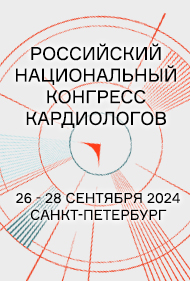Evera MRI: ICD system safe, effective in patients undergoing MRI
BOSTON — An implantable cardioverter defibrillator system designed for compatibility with full-body MRI was safe and effective in patients undergoing MRI at 1.5 T, according to study results presented at the Heart Rhythm Society Annual Scientific Sessions.
Researchers studied 275 patients (mean age, 60 years; 76% men; 74% with primary prevention indication) with de novo eligibility for an ICD who received a single- or dual-chamber ICD (Evera MRI, Medtronic) connected to prespecified leads.
During a press conference, Michael R. Gold, MD, PhD, FHRS, said that ensuring MRI safety for patients with ICDs could have important clinical implications. For example, he said, patients who have a stroke are fiftyfold less likely to have an MRI if they have an ICD, compared with no ICD. Until this study, there had been no controlled trials of MRI safety for ICDs, according to Gold.
Patients enrolled in the Evera MRI study were randomly assigned on a 2:1 basis to receive MRI at 1.5 T of the cardiac, thoracic, cervical and head regions to maximize radiofrequency exposure up to 2 W/kg specific absorption rate and gradient field exposure up to 200 T/m/s, or a 1-hour waiting period without MRI.
The composite primary safety objective was > 90% freedom from MRI-related complications 30 days after the scan and sustained tachyarrhythmia occurring during MRI. The primary efficacy endpoints were changes from the pre-MRI/waiting period to 1 months in ventricular pacing capture threshold and ventricular sensed amplitude.
A subset of those assigned MRI underwent ventricular fibrillation induction testing after the MRI to characterize arrhythmia sensing, detection and therapy.
All patients who underwent MRI were free of the composite primary safety endpoint (P < .0001), Gold said here.
He also said that both efficacy endpoints were met. All patients from the MRI group demonstrated a ≤ 0.5 V increase in ventricular pacing capture threshold compared with 98.2% of controls (P for noninferiority < .0001), while 99.3% of the MRI group and 98.8% of controls had a ≤ 50% decrease in R-wave amplitude (P for noninferiority = .0001).
Gold, chief of cardiology at Medical University of South Carolina, Charleston, and colleagues found that 34 episodes of ventricular tachycardia or ventricular fibrillation (20 induced, 14 spontaneous) occurred in 24 patients after MRI, but they did not impact sensing, detection or treatment.
“The safety and efficacy endpoints were very clearly and easily met in this clinical study,” Gold said. “[The results] broadly apply to virtually all patients with new ICDs being implanted. We were pleased and reassured at the results of this randomized study of a device specifically designed for MRI use.” – by Erik Swain
Reference:
Gold MR, et al. Abstract LBCT01-06. Presented at: Heart Rhythm Society Annual Scientific Sessions; May 13-16, 2015; Boston.
Disclosure: The study was funded by Medtronic. Gold reports receiving consulting fees/honoraria from Biotronik, Boston Scientific, Medtronic and St. Jude Medical.
Source: www.healio.com






